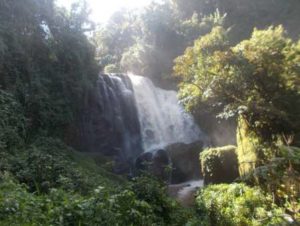 Though Mara Elephant Project focuses on protecting elephants as a keystone species in order to conserve the greater Mara ecosystem, as an extension, MEP also protects other endangered species living alongside elephants. The mountain bongo antelope residing in the Mau Forest (pictured left) is one of those critically endangered species that benefits from MEP’s permanent ranger presence in the forest thanks to support from the David Sheldrick Wildlife Trust. It is estimated that there are fewer than 100 adult individuals left in the wild, which is what makes the work the Bongo Surveillance Project (BSP) is doing to protect and conserve the critically endangered mountain bongo in the forests of central Kenya so important.
Though Mara Elephant Project focuses on protecting elephants as a keystone species in order to conserve the greater Mara ecosystem, as an extension, MEP also protects other endangered species living alongside elephants. The mountain bongo antelope residing in the Mau Forest (pictured left) is one of those critically endangered species that benefits from MEP’s permanent ranger presence in the forest thanks to support from the David Sheldrick Wildlife Trust. It is estimated that there are fewer than 100 adult individuals left in the wild, which is what makes the work the Bongo Surveillance Project (BSP) is doing to protect and conserve the critically endangered mountain bongo in the forests of central Kenya so important.
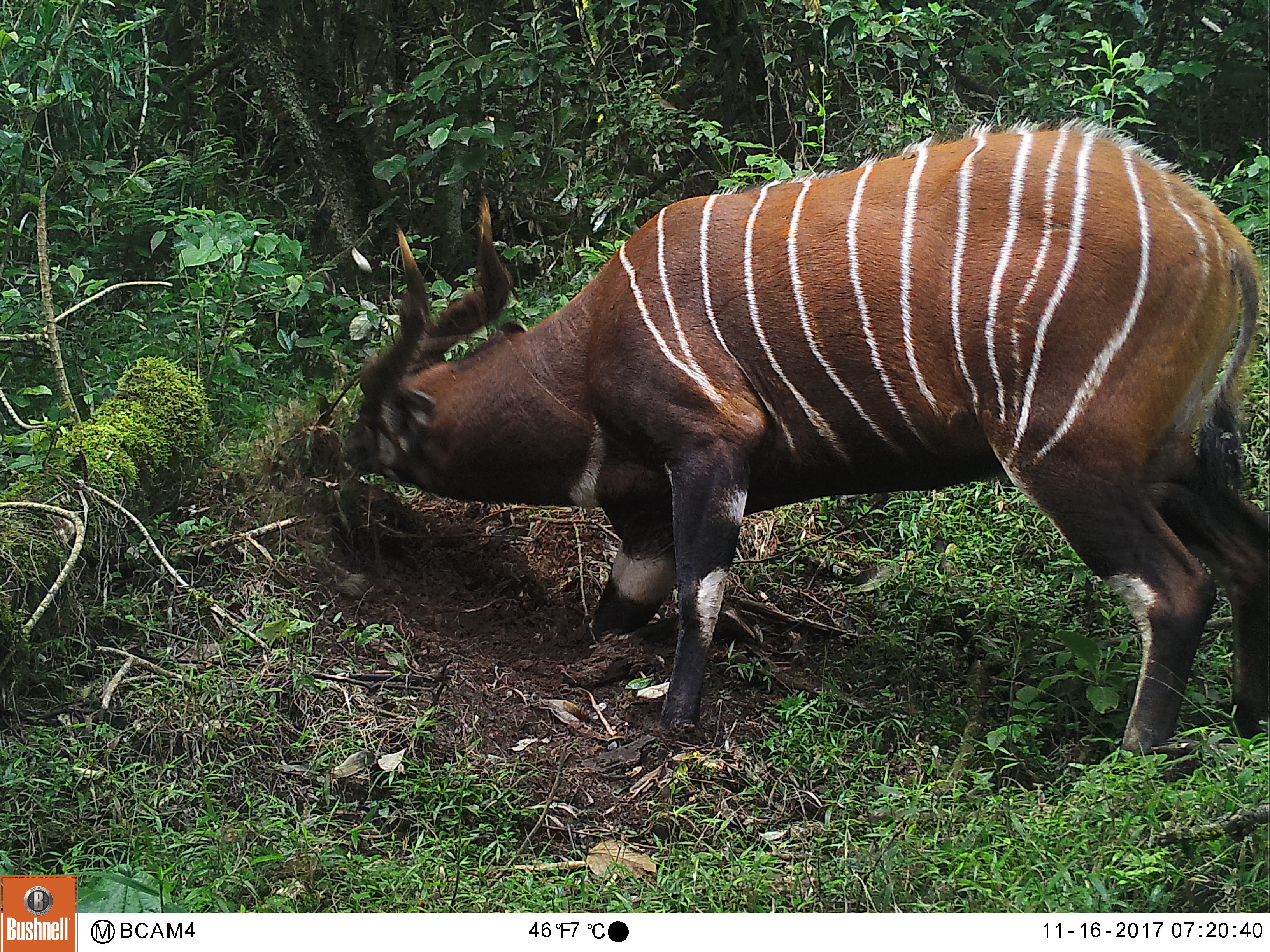
A mountain bongo spotted in the Mau Forest in 2017.
Their key program approach is the monitoring of the remaining bongo using camera traps and boots on the ground rangers which is done jointly with the Kenya Wildlife Service and Kenya Forestry Service.
The Maasai Mau mountain bongo herd seen on this video is one of the most stable herds of mountain bongo in the wild.
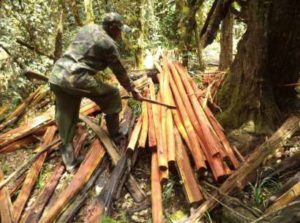
MEP’s DSWT Mau De-Snaring Unit has had much success since its inception in January 2018 in de-snaring the Mau Forest, shutting down illegal logging and charcoal sites and arresting bushmeat poachers; all threats to the mountain bongo. The BSP just released their third quarter report for 2018 and the report of the southwestern portion of the Mau Forest are consistent with what MEP rangers are seeing on the ground. Their team continues to find snares to take down, charcoal production sites to close, illegal timber (pictured left) and bushmeat as well as grazing in the forest boundary.
BSP SW Mau and Maasai Mau Report
In July, MEP along with the BSP also found five elephant traps that were collected and destroyed. Elephant traps are called “drop spears;” these are long sharp spears that are hung with the sharp side down in the trees and triggered when an elephant trips the wire below that is often low to the ground. The spear then drops from the trees and usually penetrates their tough skin and severs their spine, instantly killing or fatally wounding them. These traps are not only deadly to elephants, but MEP rangers as well. They are often hard to see, and caution is always needed when disabling them.
 A MEP ranger with the DSWT Mau De-Snaring Unit showing a drop spear recently disabled.
A MEP ranger with the DSWT Mau De-Snaring Unit showing a drop spear recently disabled.
A drop spear being disabled by MEP rangers in the Mau Forest.
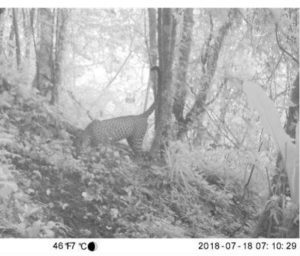
The BSP has a total of six camera traps set up to snap a photo at the first sign of motion and during this reporting period there were several good shots of mountain bongo recorded, as well as photos taken of bushbucks, elephants, duikers, giant forest hogs, leopard (pictured left) and monkeys. These camera traps are not only useful for recording animals in the forest, but also illegal activity. In August, the traps caught cedar post transports coming out of the forest as well as poachers with dogs.
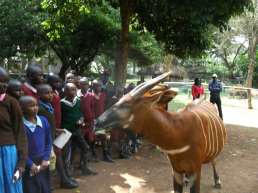 Though the odds seem insurmountable with such a large area to cover and so much illegal activity, there is hope in the engagement and willingness of the local communities to hold meetings with stakeholders about the importance of the Mau Forest, the wildlife living inside and the need for further education on how to protect the area. BSP has a school program that currently has more and more schools joining up in the area. BSP visited Osanangururi Primary School in August and presented to 62 students (pictured right).
Though the odds seem insurmountable with such a large area to cover and so much illegal activity, there is hope in the engagement and willingness of the local communities to hold meetings with stakeholders about the importance of the Mau Forest, the wildlife living inside and the need for further education on how to protect the area. BSP has a school program that currently has more and more schools joining up in the area. BSP visited Osanangururi Primary School in August and presented to 62 students (pictured right).
“The exposure that these children are experiencing is unique considering the remote area that they come from. From my past experience, the pupils who visited earlier last year improved their academic grades with a margin by 60% in related subjects. Also, I have seen great change with community members who had exposure earlier. BSP programmes have continued making great change in our community to enlighten them through these conservation field trips. We are 100% in support of this programme for the conservation of Bongo in our area. We have seen the bongo and this gives us more reason to conserve the ones in the wild in our area.” Danson, Headmaster Osanangururi Primary School
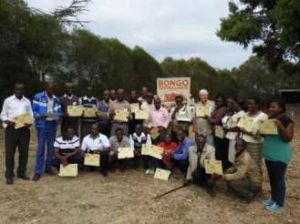
In October, they held a patron’s workshop that was attended by community members and teachers (pictured left) and featured Mike Prettejohn, project manager of BSP, who gave updates on the project and progress. A lecture was delivered on climate change by Samuel Njuki, a wildlife biologist, and Drowning in Plastics a recent BBC report was discussed together in relation to the new initiative in Kenya to ban plastic bags.
Mara Elephant Project is proud to continue an operational partnership with the Bongo Surveillance Project in order to conserve the Mau Forest and the critically endangered mountain bongo antelope and other wildlife living inside.


